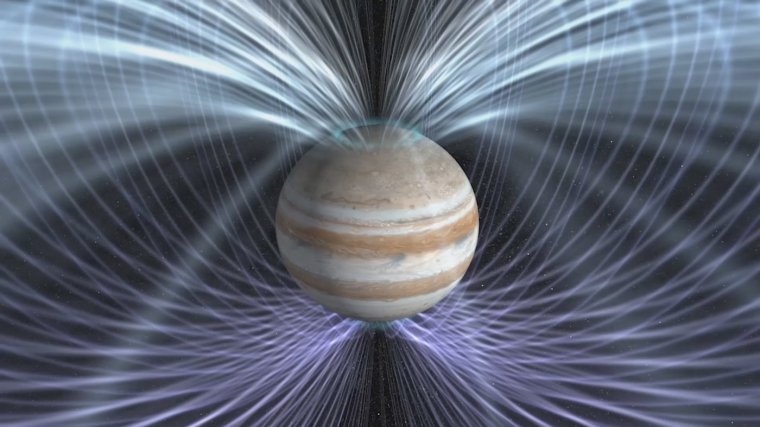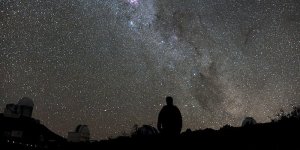| News / Science News |
Juno Peers Inside a Giant
NASA | JUNE 30, 2016
NASA's Juno spacecraft will make its long anticipated arrival at Jupiter on July 4. Coming face-to-face with the gas giant, Juno will begin to unravel some of the greatest mysteries surrounding our solar system's largest planet, including the origin of its massive magnetosphere.

Scientists will use the twin magnetometers aboard NASA's Juno spacecraft to gain a better understanding about how Jupiter's magnetic field is generated. ![]()
Magnetospheres are the result of a collision between a planet's intrinsic magnetic field and the supersonic solar wind. Jupiter's magnetosphere -- the volume carved out in the solar wind where the planet's magnetic field dominates --extends up to nearly 2 million miles (3 million kilometers). If it were visible in the night sky, Jupiter's magnetosphere would appear to be about the same size as Earth's full moon.
By studying Jupiter's magnetosphere, scientists will gain a better understanding about how Jupiter's magnetic field is generated. They also hope to determine whether the planet has a solid core, which will tell us how Jupiter formed during the earliest days of our solar system.
One of the mysteries the team hopes to answer is how Jupiter's magnetic field is generated. Scientists expect to find similarities between Jupiter's magnetic field and that of Earth.
Magnetic fields are produced by what are known as dynamos -- convective motion of electrically conducting fluid inside planets. As a planet rotates, the electrically susceptible liquid swirls around and drives electric currents, inducing a magnetic field. Earth's magnetic field is generated by liquid iron in the planet's core.
The observations made by Juno's magnetometers will also add to our understanding of Earth's dynamo, the source of our planet's magnetic field, which lies deep beneath a magnetized layer of rocks and iron.
YOU MAY ALSO LIKE





